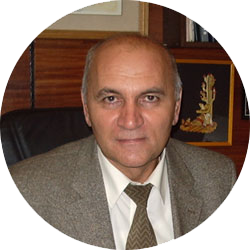The year is 1973. The first electrochemical reactor for unipolar electrochemical treatment of drilling mud, developed and manufactured in SREDAZNIIGAZ.
In the design of the reactor, an attempt is made to simulate the processes occurring in a three–electrode radio tube – a triode. The reactor consists of four composite negative electrodes. The main plate negative electrodes on both sides are protected by negative grid electrodes with an adjustable value of the electric potential. The positive electrode is the drilling fluid itself, in contact with an external flat electrode located in the lower part of the reactor (not shown in the photo). The total current through the reactor during the tests on the drilling rig (photo below left) varied from 200 to 500 amperes. Tests have shown the prospects of electrochemical regulation of drilling mud properties.




ACCO installations with a rotating cylindrical electrode for unipolar cathode electrochemical
processing and simultaneous adhesion-centrifugal cleaning of drilling mud were developed by employees of the Laboratory of Electrical Engineering of SREDAZNIIGAZ as an effective replacement for vibrating screens and UOBR installations. The degree of cleaning of the drilling mud from the suspended pieces of rock was determined by the speed of rotation of the cylindrical drum (in the picture above in the center), which is a negative electrode (cathode). The diameter of the rotating electrode is 600 mm, the length is 1400 mm. Current – 600 A, voltage – 24 V. The rotation speed is from 300 to 1200 rpm.
Installations with one rotating electrode (in the pictures on the left) and two (in the upper right) have been developed and tested in practical drilling conditions. The capacity of the plant is from 100,000 to 180,000 liters per hour. Due to the presence of a positive electrode with automatic removal of clay crust, the EATSO installations allowed for high-quality cleaning of drilling mud without the use of hydrocyclones and vibrating screens. Kokand region of Uzbekistan, 1978.

- 1st period, 1972 – 1976: development of flow-through electrochemical diaphragm reactors with flat electrodes.
- 2nd period, 1976 – 1985: development of flow-through electrochemical diaphragm reactors with coaxial electrodes.
- 3rd period, 1985 – 1989: development of flow-through electrochemical diaphragm reactors with coaxial electrodes in the form of monoblocks.
- 4th period, 1989 – 2015: development of flow-through electrochemical diaphragm reactors with coaxial electrodes with consideration of optimal size and materials.
- 5th period. 2015-present: AQUATRON systems – a new step in the development of electrochemical activation
